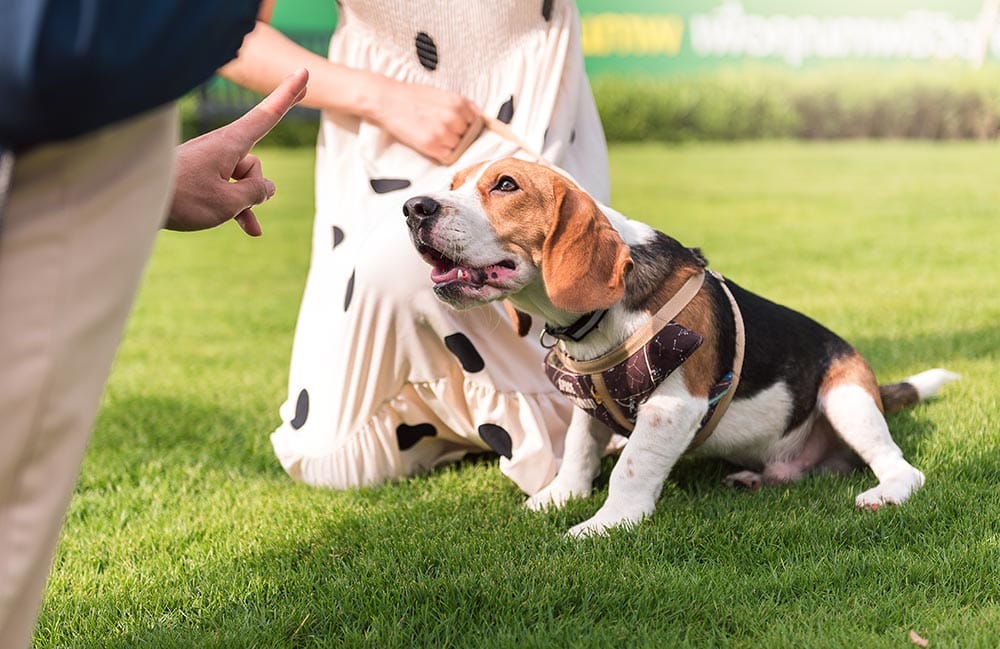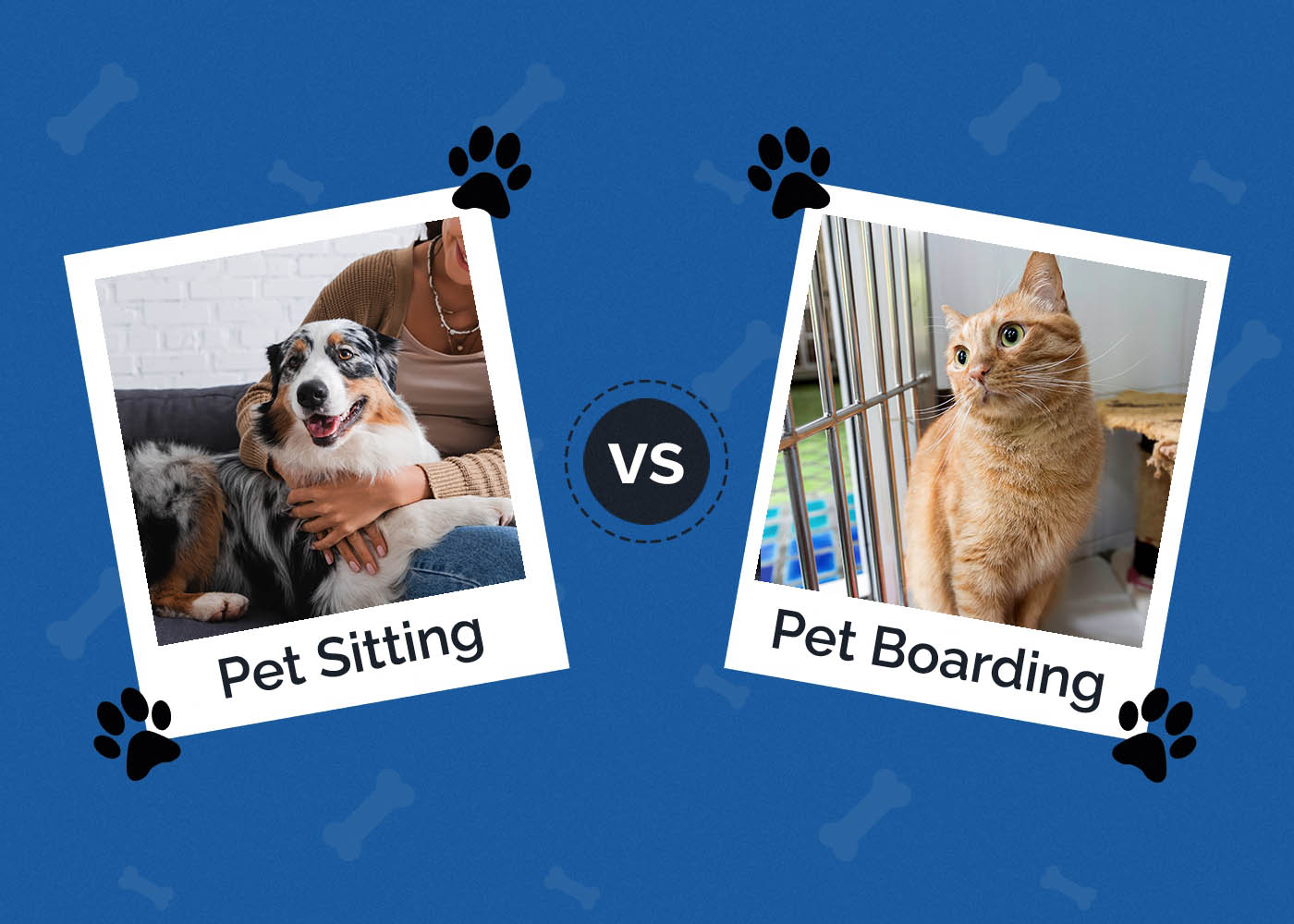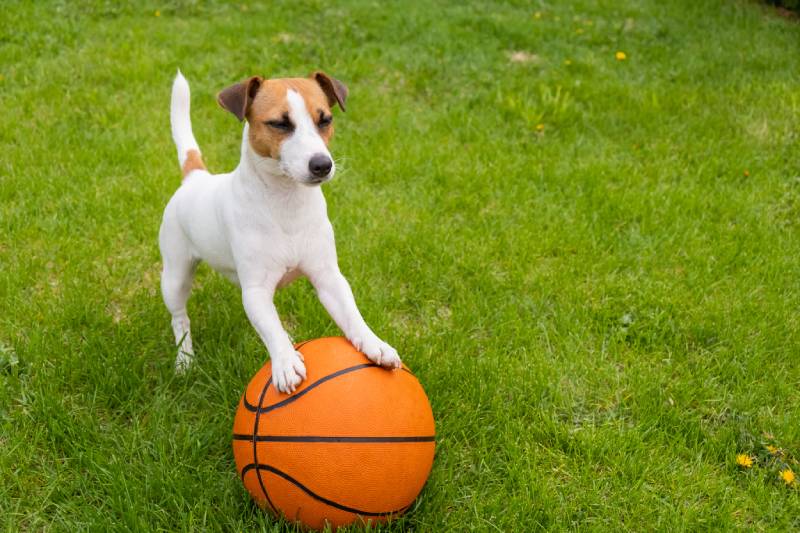Maltipoo (Maltese & Poodle Mix): Info, Pictures, Characteristics & Facts
Updated on
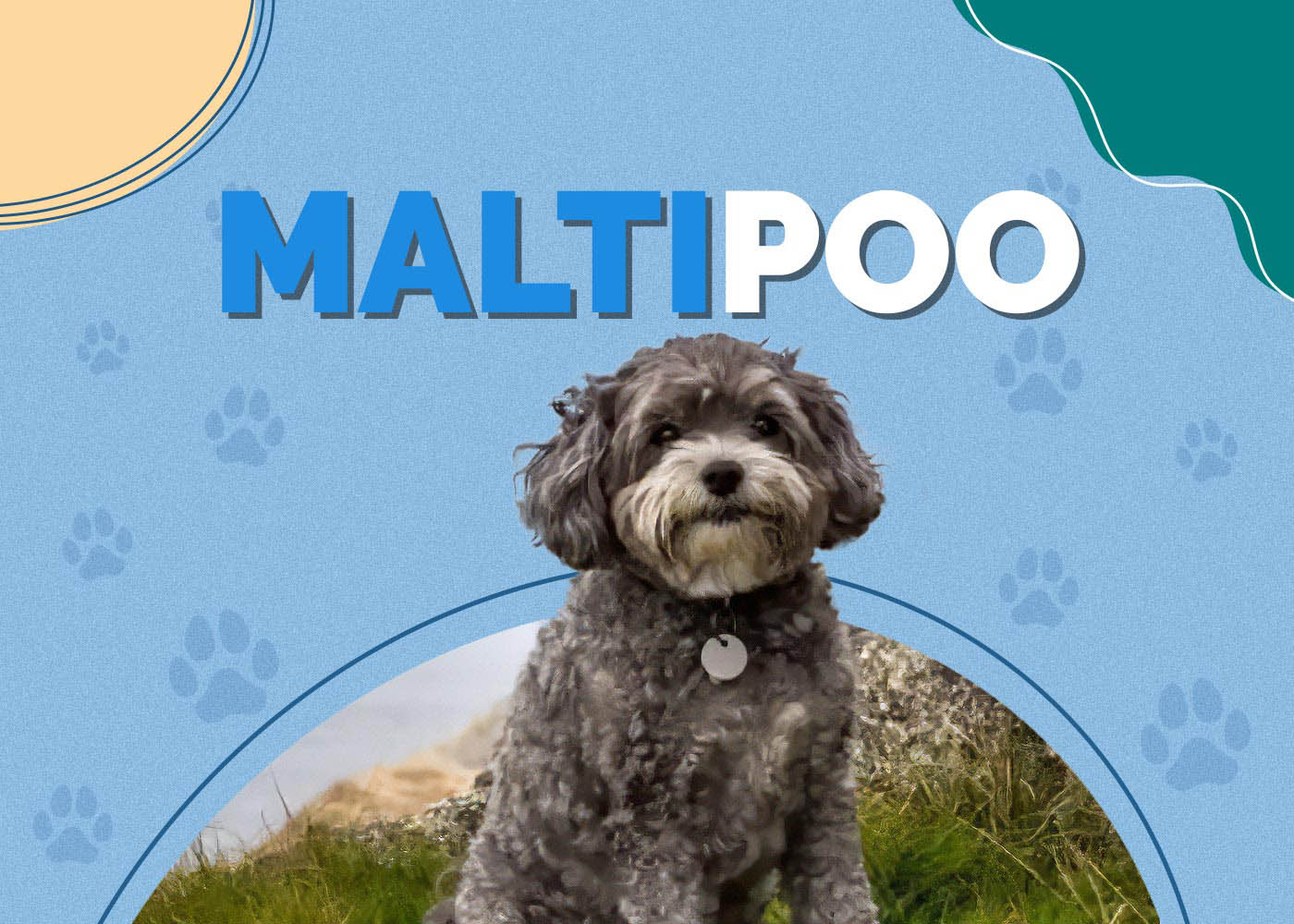
| Height: | 8–14 inches |
| Weight: | 5–12 pounds |
| Lifespan: | 12–15 years |
| Colors: | White, silver, blue, cream, brown, gray, black |
| Suitable for: | First-time dog owners, families |
| Temperament: | Affectionate, playful, upbeat |
Maltipoos are a companion dog that is a mix between a Maltese and a Poodle. Usually, smaller Poodles are used due to the Maltese’s smaller size. Larger Poodles will result in larger puppies, which may cause difficulty for the smaller Maltese parent. The Maltese Poodle is suitable mostly as a companion dog, as that is what it is mostly designed for. They are friendly and affectionate, which makes them suitable dogs for more extensive and smaller families alike.
Because this is a mixed breed, one Maltipoo can vary a lot from the next one. These dogs vary depending on what traits they inherit. They can inherit any trait from either parent, so it just depends on what genetics they inherit. For this reason, they can vary a lot.
It isn’t easy to draw any big conclusions about these dogs because of their genetic diversity. However, they all have a few things they have in common, which we will discuss in this article.
Maltipoo Puppies
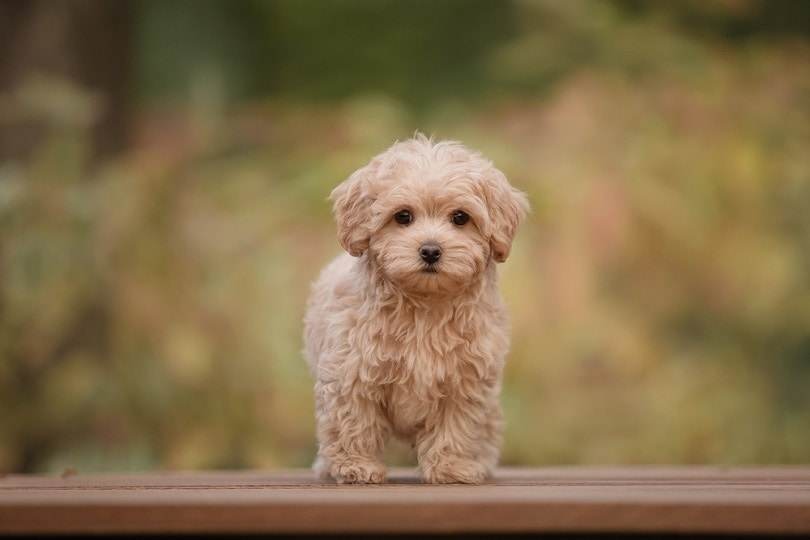
The Maltipoo is a mix between the gentle and playful Maltese and the active and smart Poodle. They can have any mix of these traits. They may be brilliant or have more average intelligence. Their exercise needs can vary a bit as well, depending on how active they are.
Most of the time, these dogs are decently smart and typically train pretty quickly. Of course, this can vary quite a bit. Some may be smarter than others. Usually, Maltipoos are friendly. Early socialization and training ensure that they are accepting of strangers and other pets as well. These are not typically aggressive in the least.
These dogs don’t shed very much and have a curly coat, which means they will need to be groomed regularly. They are often considered “hypoallergenic.” However, those who are allergic may still react negatively to these dogs. This is because dog allergies are caused by the dogs’ saliva and skin, which any dog is going to have—no matter their coat type.
3 Little-Known Facts About the Maltipoo
1. Maltipoos are described as 1st generation or 2nd generation.
These are one of the few mixed breeds that are sometimes bred past the 1st generation. 2nd generation dogs are more likely to be more uniform, as some recessive traits from the Poodle and Maltese parent are bred out as generations go on.
2. Colors vary greatly.
Maltipoos can look very different from each other. They come in a variety of different colors. You can find a puppy in just about any color.
3. Size depends on the size of the Poodle used.
The Poodle used in breeding has a large role in the size of the puppy. Usually, toy Poodles are used, and this is the size we have used when writing this article. However, rarely, standard Poodles are used, and this results in an enormous puppy.

Temperament & Intelligence of the Maltese Poodle Mix 🧠
Maltipoos are bred to be companion dogs, so they often do well in families. They are affectionate and usually gentle. Puppies can be playful and quite active. However, they tend to calm down as they age. Some may stay relatively active into adulthood, like their Poodle parent.
They are well-suited to families with children who like to play as well as snuggle. They are usually happy to spend time with their people no matter what they’re doing.
These dogs are a bit loud and vocal. They can make good alert dogs on some occasions, depending on their specific character and training. Maltipoos tend to bark at anyone who passes by.
- Related Read: Maltese vs. Maltipoo: What’s the Difference?
Are These Dogs Good for Families? 🏡
These dogs are usually very good with families. They are playful and cuddly, so they fit in with many different people. They are usually very friendly with strangers and friends alike.
Sometimes, these dogs are not particularly good with children, though. They are smaller and can be more easily injured by toddlers and preschoolers. This can cause them to snap and be more fearful of children.
Does This Breed Get Along with Other Pets? 🐶 😽
Yes. This dog is not incredibly territorial, nor does it have a significant prey drive. They usually get along with other dogs just fine and don’t tend to chase cats.
Of course, dogs that are properly socialized and raised around cats and other pets usually see them as part of the family. However, if they don’t see a cat for most of their life, they may be unsure what to do with it when they see one for the first time. Puppy classes and socialization are essential for raising a well-meaning dog.
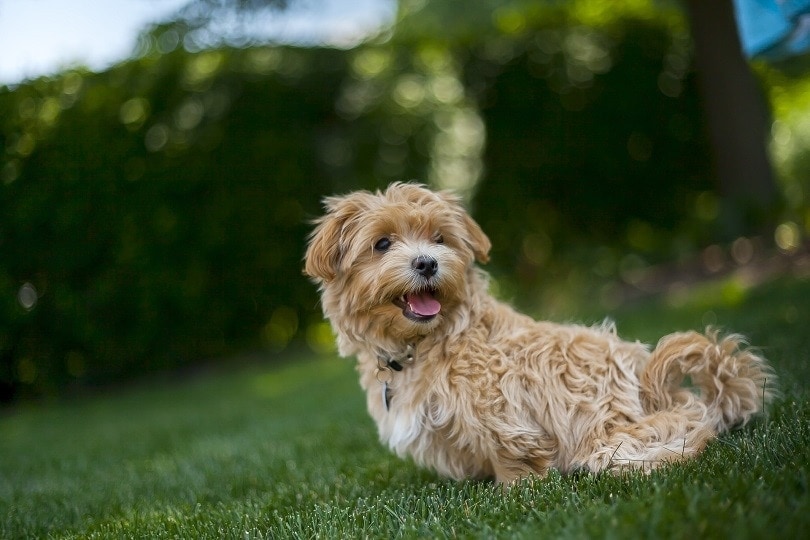
Things to Know When Owning a Maltipoo
Food & Diet Requirements 🦴
Maltipoos don’t have any particular dietary requirements. They can eat any other high-quality food that any other dog eats. Of course, we recommend a high-quality dog food that contains quite a bit of meat and protein.
Grains are not necessarily a bad thing as long as the particular dog isn’t allergic to grains. These dogs are not particularly prone to food allergies, but they can happen.
Exercise 🐕
When it comes to exercising your Maltese Poodle Mix, you need to keep an eye on your particular canine. Some dogs are quite active and need a lot of playtime. Others prefer to lounge around. It is usually better to be on the side of too much exercise than too little.
Plan on taking your dog on at least one walk a day. Playtime in a backyard may be necessary as well. These dogs don’t tend to roam, but it is still recommended to keep them on a leash or in a fenced-in area.
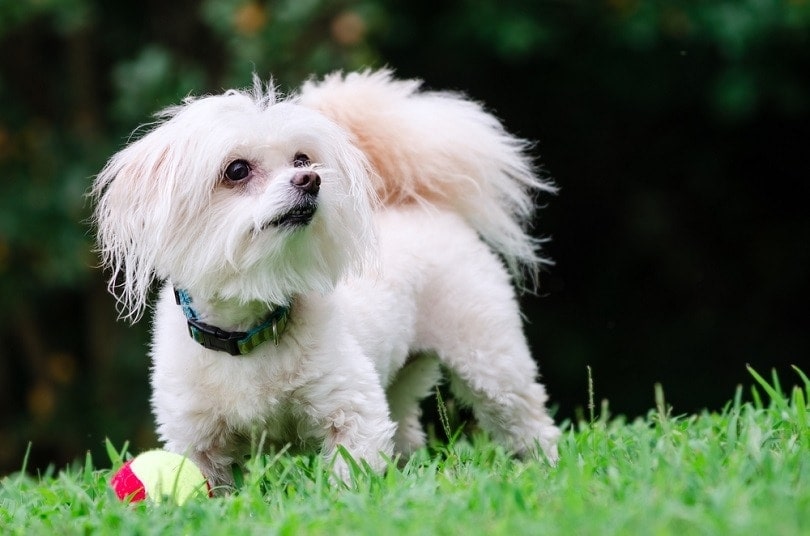
Training 🦮
While the intelligence of these dogs varies quite a bit, they are usually easy to train. They are typically smart and eager to please. They are not particularly stubborn or anything of that sort, so they usually take to training well.
Because of their intelligence level, they need a bit of mental exercise every day, or they may become destructive. Training is an easy way to do this, so many dogs enjoy it immensely. Puppy training classes are recommended to stretch your dog’s mind and get them used to others.
Grooming ✂️
Typically, these dogs will require at least a bit of grooming. They do not shed much, but their coats are high-maintenance otherwise. Their wooly coat requires daily brushing from a young age. Luckily, most dogs get used to regular brushing.
They typically need a bath at least once a month on top of whenever they get visibly dirty. They will likely need a bath after running through leaves, for instance. Or, at least, a good brushing. Clippings every few months are required, though their faces and paws may need trimming more often. We recommend scheduling them a monthly grooming appointment unless you are willing to learn how to groom them properly at home.
Their nails should be trimmed every month at the very least. They need their teeth brushed quite a bit as well. Daily is best. These dogs are particularly prone to dental problems, so brushing is essential.
Health and Conditions ❤️
These dogs are mixed breeds, so they tend to be relatively healthy. They are not prone to many different health conditions.
- Allergies
- Progressive retinal atrophy
- Shaker syndrome
- Patella luxation
- Dental disease
Conclusion
The Maltipoo is a companion dog first and foremost. They do well in most families and are typically very affectionate and friendly. If you’re looking for a cuddly family dog, this pup may be perfect.
However, they require a bit more care than other breeds. Their coats require regular maintenance, and brushing their teeth is particularly important for this breed, as they are prone to serious dental problems. Sometimes, these dental problems can be deadly, as when one of their teeth gets infected, the infection spreads to the rest of the body.
They have moderate to high exercise needs as well, though they tend to be calmer as they age.
See Also:
- Maltipoo Male vs. Female – How Do They Compare?
- Why Does My Maltipoo Lick So Much? 12 Likely Reasons
Featured Image Credit: Elena Bennett, Shutterstock




